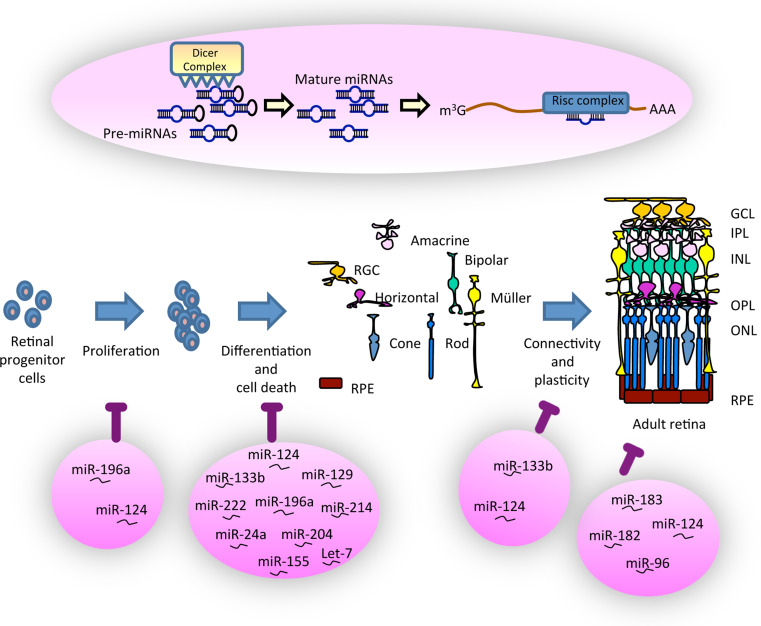Fig. 2.
MicroRNAs are essential for the development and function of the vertebrate retina. A graphical overview of the canonical pathway of miRNA maturation is represented on the top. MiRNA biogenesis consists of a series of reactions that convert the primary miRNA transcript (pri-miRNA) first into a precursor miRNA (pre-miRNA) and finally into a biologically mature and active miRNA. The main steps of retinal development are depicted in the middle. The six types of neurons of the vertebrate retina originate from a population of neuroepithelial precursor cells in the eye primordium. Pink circle at the bottom indicates the main miRNAs that regulate the different steps of retinal development. Their function extends to homeostasis of the mature retina. Details of the interaction of these miRNAs during eye development are discussed in the text. GCL Ganglion cell layer, IPL inner plexiform layer, INL inner nuclear layer, OPL outer plexiform layer, ONL outer nuclear layer, RPE retinal pigmented epithelium

